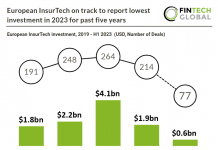With customer demands changing to become more focused on flexibility and personalisation, behavioural analytics is the key to help insurers meet this need.
Behavioural analytics is a method of data analytics to better understand and even predict a user’s habits. There are a lot of use cases for this technology, from tailored services through to anti-fraud measures. Most commonly in insurance, it is used to gain insights into customers and provide them with more personalised services. Whether that is lower premiums on safer drivers or even recommendations on living healthier to reduce future claims. There is a magnitude of ways behavioural analytics can be implemented across the value chain and it is becoming a major priority for firms.
Customers are increasingly seeking tailored experiences from their insurance firms. Around a fifth of insurance customers claim their provider offers no customisation, despite 80% of respondents desire for it, according to a report from DataArt which cites data from Youbiquity Finance. Furthermore, 77% of those surveyed said they would happily exchange behavioural data for this type of service.
Peoples’ expectations for insurance are becoming more about flexibility. Life.io chief product officer Molly Black said, “Now, more than ever before, customers want transparency, control, and personalization. They want their cost of insurance to be a reflection of their behaviours and their policies to be tailored to their life.” For example, if they are a safe driver or live healthy, they want to see it reflected in their prices. Similarly, if they replace their home’s roof, they will expect a discount on the policy.
Auto insurance has been the beacon for the use of behavioural analytics in insurance. Telematic devices that sit in cars have been a common sight for many years and this data is helping to reduce the prices of drivers. But this type of technology is easily transferable to other insurance segments. Black explained that Life.io has increasingly found more people are asking for step tracking to be used by health and life insurance policy providers to reduce their premiums in a similar manner to safe driving. “The consumer appetite for the integration between behaviours and products is there! Now the insurance industry just needs to catch up across all sectors.”
One of the biggest segments of insurance in need of behavioural analytics is life insurance. “Despite being the most commonly sold life insurance product, level term insurance doesn’t really make sense in the modern world,” Black added. “A customer should be able to set any length and the coverage amount should evolve with the financial successes and challenges they face over time. Behavioural analytics can help drive recommendation engines that help people regularly reassess their needs.”
Implementing this type of data analytics would then also help firms better meet the market parameters to identify those more at risk. Cloud Insurance business analyst Joel Sundström said, “With 5% of all patients accounting for nearly 50% of all healthcare spending, it’s more important than ever to utilise available predictive analytics solutions to identify risk factors in patients before they become problematic.”
But behavioural analytics can help firms in more ways than simply making insurance more tailored to customers. Cloud Insurance business analyst Kristian Greenway stated it can help a firm assess a policyholder’s regular actions to better judge the different types of risks they face. This is crucial because it can help remove regular activities that might increase the prices of policies. Most actions have risks. Obviously, when driving a car there is a chance to crash, but so is there when you go skateboarding. Even just taking a pet out for a walk could lead to injuries for the animal.
Greenway said, “With the help of behavioural analytics, predicting and being proactive for each single customer is possible to a much larger degree than before. The insurance companies can work proactively towards the customer, mitigating risks and advising the customer with regards to each explicit kind of insurance instead of the more general advice that are currently market-standard.” By utilising analytics, companies can move away from being reactive and towards proactive.
Echoing this sentiment, Sentiance general manager of the Americas Peter DeLuca explained this type of data analytics can prevent claims happening before they do. “With the variety of behavioural insights that Sentiance creates, insurance companies can prevent claims before they happen,” DeLuca said. For example, an auto insurer can use driving data and coach their insured to become safer drivers. Fewer accidents means fewer claims. A life insurer can use other types of behavioural insights such as the physical activity levels of their insured to coach them to lead healthier lifestyles, help them better manage their pain, and lower their risk of potential diseases.”
Behavioural analytics would be welcome in all areas of the insurance sector. It will help all sectors provide customers with the cover they need, rather than giving them protections for things they do not even need, which could potentially push people away from getting a policy.
More than simply understanding the behaviour
While understanding the habits of a customer is useful, simply relying on behavioural analytics might not be enough. Understanding the habits of customers will help better price policies, but truly knowing the customer could open much more potential business.
However, to truly know who your customer, it requires more than having their contact details or knowing their behaviours. Quantexa head of insurance solutions Alex Johnson explained that if an insurer has a commercial client, they need to know their structure, hierarchy, subsidiaries, supply chain and directors. For their personal lines, they should understand who that person lives with and other details about their living. While some of this information is harder to get, public records and IoT sources can fill some of the gaps.
Secondly, the insurer needs to know who customers are interacting with and how they are doing it. Johnson said, “This is about interpreting the interactions, relations that those customers have with each other in a “network”. With that network view you can analyse how all aspects of the network behave and therefore truly understand the customer.” Once compiling this information, the insurer can react quicker to a client and pre-empt their moves and how to best meet their needs.
One of the success stories of behavioural analytics, as seen by Quantexa, is around propensity modelling and loss reduction. Understanding the customer’s network can help the insurer note the rise and fall in claims frequency within the network, which can be used to judge the likelihood of a customer claiming.
“It is also very applicable in understanding cross-sell and up-sell opportunities for “connected customers” or also churn – generally customers like to do things together e.g. if a subsidiary of a business buys a liability policy with you it is probably a good time to think about offering the rest of the corporate entities the same coverage. Or if multiple members of a customer’s household have just churned there is a high probability that this customer will churn too.”
Why make the move to proactivity?
All of those FinTech Global spoke to agreed that all insurers need to make this move towards proactivity. It is less of a choice and more of a requirement to stay functional.
Johnson stated that all insurers need to serve their customer during claims, reduce risk and costs of claims to increase profitability, and understand liquidity to invest. All of these require the insurer to be proactive and have a forward-looking approach. During a claim, for example, if a firm can quickly offer them relevant services as well as quickly handle the case, the client is more likely to renew at the end of a policy. “If you can better understand claims proliferation across your portfolio and analyse networks within that you can often “see claims coming” and thus offer services to reduce the overall loss and cost of the claim. And if you truly proactively understand your customer and the risk of your book you can minimize exposure and release liquidity for investments.”
Most insurers are already using some form of behavioural analytics, Johnson said, but that does not mean they have optimised its usage. “The key to success is generally whether it is being done consistently, on the most accurate data and whether it is being done holistically,” he said. “There is no point in using behavioural analytics to find “good” and high value behaviours if you then aren’t using it to find “bad” or high risk / fraudulent behaviours. Analytics models only really do two things.”
Life.io president and chief marketing office Muriel Petri concluded, “Proactive firms will be the ones who gain market share and shape the future. Behavioural analytics is at the core of intelligent, human-centric transformation. Those that don’t make this shift may not survive and certainly won’t thrive against competitors who embrace behavioural analytics to transform the products and services they provide to customers.”
Copyright © 2021 FinTech Global











